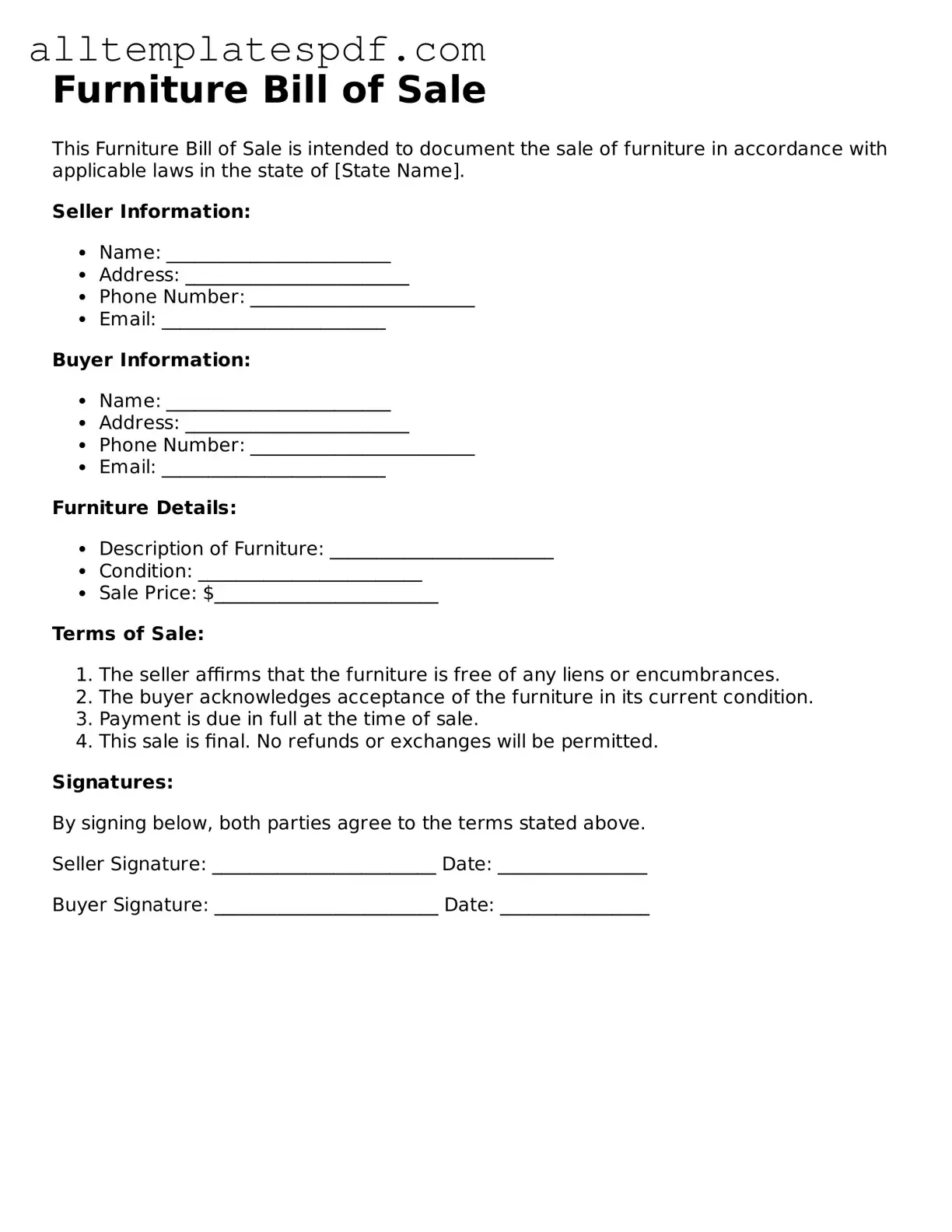When filling out a Furniture Bill of Sale form, individuals often make several common mistakes that can lead to confusion or legal issues. One frequent error is the omission of essential details. Buyers and sellers should ensure that all relevant information, such as names, addresses, and contact numbers, is clearly stated. Without this information, it may be difficult to establish the legitimacy of the sale.
Another mistake is failing to accurately describe the furniture being sold. A vague description may lead to misunderstandings. It is crucial to include specifics such as the type of furniture, its condition, and any identifying features. This clarity helps protect both parties in the transaction.
People sometimes neglect to indicate the sale price. Clearly stating the amount agreed upon is vital. Without this, there may be disputes about the value of the furniture, which can complicate matters later on.
Additionally, individuals may forget to include the date of the transaction. This detail is important for record-keeping and can be significant in resolving any future disputes. The date provides context for the sale and can help establish timelines.
Another common error involves not obtaining signatures from both parties. A Furniture Bill of Sale is only valid when signed by both the buyer and the seller. This act signifies that both parties agree to the terms laid out in the document.
Some people may also overlook the need for witnesses or notarization. While not always required, having a witness or a notary public can add an extra layer of protection and legitimacy to the sale. This step can be particularly important for high-value transactions.
Inaccurate payment methods can also pose a problem. It is essential to specify how payment will be made, whether through cash, check, or another method. This detail can prevent misunderstandings regarding payment terms.
Lastly, individuals may fail to keep a copy of the completed bill of sale. It is advisable for both the buyer and the seller to retain a copy for their records. This document serves as proof of the transaction and can be useful in case of future disputes.
